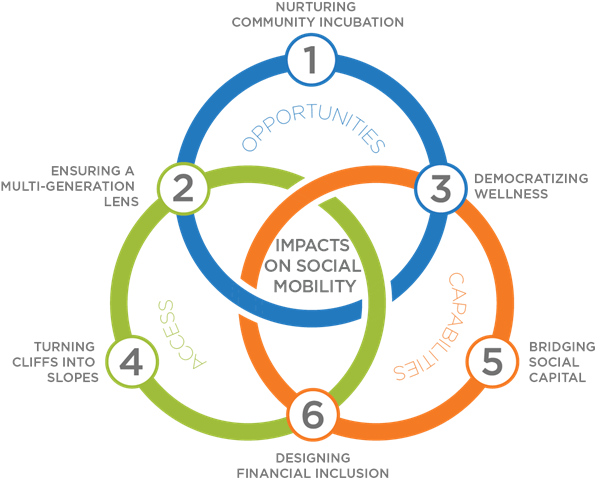Sociology Notes On – Social Mobility – For W.B.C.S. Examination.
সমাজবিজ্ঞানের নোট – সামাজিক সচলতা – WBCS পরীক্ষা।
Social mobility refers to the shift in an individual’s social status from one status to another. The shift can either be higher, lower, inter-generational, and intra-generational, and it cannot be determined if the change is for good or bad.Continue Reading Sociology Notes On – Social Mobility – For W.B.C.S. Examination.
Origin of the Social Mobility Concept
Russian-born American sociologist and political activist Pitirim Sorokin first introduced the concept of social mobility in his book “Social and Cultural Mobility.” He states that there is no society that is completely open (such as the class system) and no society that is completely closed (like the caste system in India).
According to Sorokin, no two societies are the same in terms of movement allowed and discouraged, and that the speed of the social mobility can change from one time period to the next. It depends on how developed the society is.
Such societal shift can happen over time as individuals move from one position to another due to various social interactions. Mobility, more or less, provides people with benefits as they are motivated by different factors in society and work to reach towards new roles that offer them a better standard of living and greater rewards. People compete and cooperate with others in society to move up the social mobility ladder.
Types of Social Mobility
Social mobility can take different forms, and people can experience different types of mobility in different stages of their lives. The type of mobilities are now independent of one another and can often overlap. They are only distinguished for the purpose of analysis.
1. Horizontal mobility
It occurs when a person changes their occupation but their overall social standing remains unchanged. For example, if a doctor goes from practicing medicine to teaching in a medical school, the occupation’s changed but their prestige and social standing remains the same. Sorokin describes horizontal mobility as a change in religious, territorial, political, or for family and other horizontal shifts with no change in the vertical position.
2. Vertical mobility
It refers to a change in the occupational, political, or religious status of a person that causes a change in their societal position. An individual or social object moves from one social stratum to another. Vertical mobility can be ascending or descending.
Ascending involves an individual moving from a group in a lower stratum to a higher one or the creation of a similar group with a higher societal position, instead of side by side with its existing group. Descending mobility occurs for example when a businessman incurs losses in his business and is forced to declare bankruptcy, resulting in a move to a lower stratum of society.
3. Upward mobility
It is when a person moves from a lower position in society to a higher one. It can also include people occupying higher positions in the same societal group. However, upward mobility, while seen as a good thing, can also come at a cost for individuals.
When a person moves upwards, they need to leave behind familiar surroundings such as family and places. They may also need to change their way of thinking and behavior. The individual will need to adapt to the new environment as a result of their upward movement and adopt different behaviors in the new society.
4. Downward mobility
Downward mobility takes place when a person moves from a higher position in society to a lower one. It can occur when someone is caught performing a wrongful act that can result in the loss of the position they currently hold.
Downward mobility can be extremely stressful for people who face a rapid decline in their social status; they may find it hard to adapt to the new environment as it is not similar to the standard of living they are used to. Downward mobility is an example of the extent to which a society values equal opportunity and structure.
5. Inter-generational mobility
Inter-generational mobility happens when the social position changes from one generation to another. The change can be upward or downward. For example, a father worked in a factory while his son received an education that allowed him to become a lawyer or a doctor.
Such societal change also causes the generation to adopt a new way of living and thinking. Inter-generational mobility is affected by the differences in the parents’ and their offspring’s upbringing, changes in population, and changes in occupation.
6. Intra-generational mobility
The intra-generational change in societal position occurs during the lifespan of a single generation. It can also refer to a change in position between siblings. One way is when a person climbs up the corporate ladder in their career. For example, an individual starts their career as a clerk and through their life moves on to a senior position such as a director. One sibling may also achieve a higher position in society than their brother or sister.
Please subscribe here to get all future updates on this post/page/category/website


 +919674493673
+919674493673  mailus@wbcsmadeeasy.in
mailus@wbcsmadeeasy.in







































































































